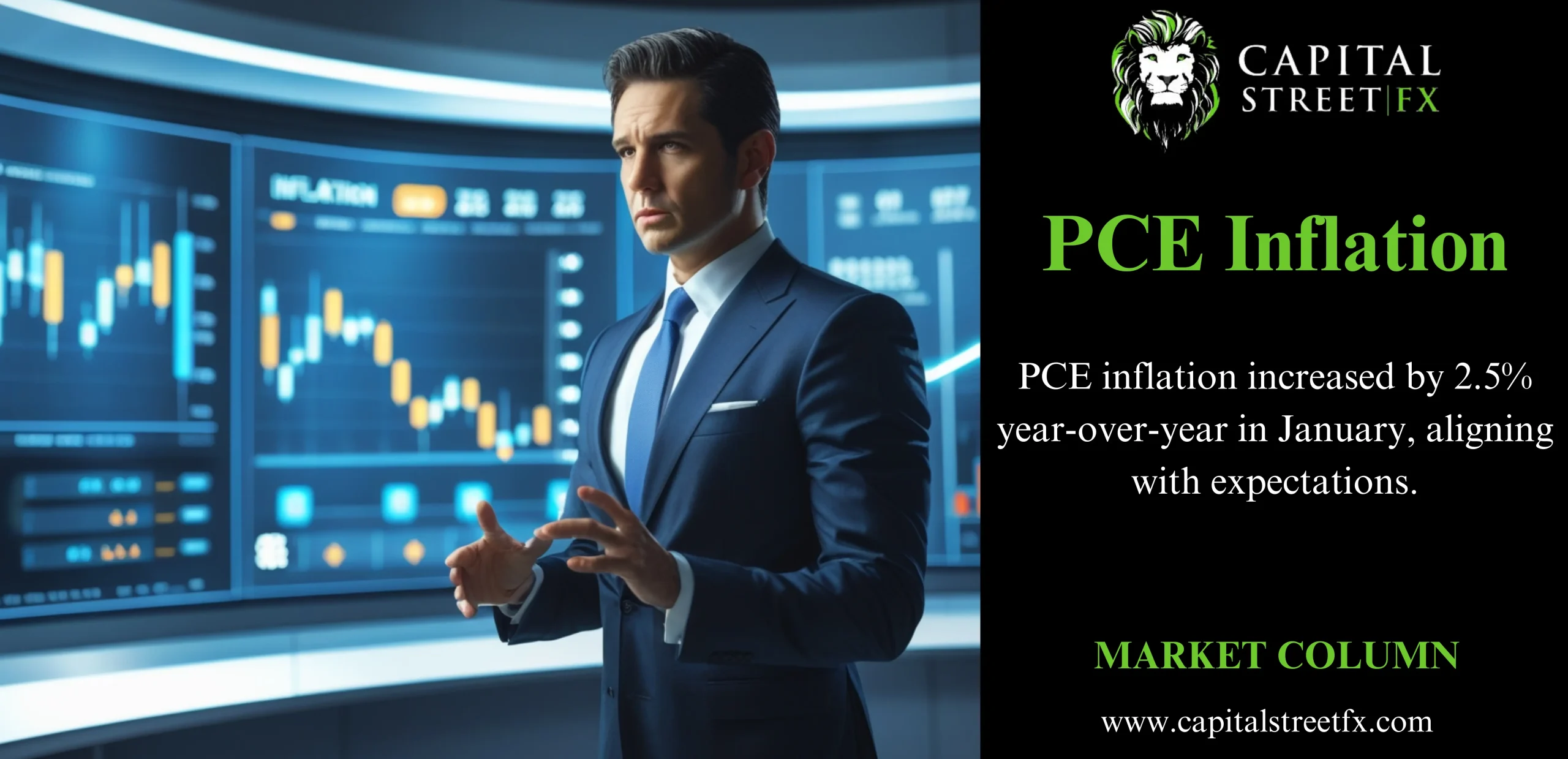PCE inflation increased by 2.5% year-over-year in January, aligning with expectations.
U.S. inflation maintained its previous month’s pace in January but eased on an annualized basis, while consumer spending unexpectedly declined, creating a mixed economic backdrop for Federal Reserve policymakers as they assess the future trajectory of interest rates.
Data released by the Commerce Department’s Bureau of Economic Analysis on Friday showed that the Personal Consumption Expenditures (PCE) Price Index rose 0.3% last month, matching December’s increase—the largest since April 2024.
Over the past 12 months, PCE inflation edged down to 2.5% from 2.6%, aligning with economists’ expectations.
Excluding food and energy costs, core PCE inflation registered a year-over-year increase of 2.6%, cooling from December’s 2.9% and in line with forecasts. The prior December estimate stood at 2.8%.
Monthly, core PCE inched up to 0.3% from 0.2%, also meeting projections.
At the same time, consumer spending—representing a significant share of U.S. economic activity—contracted by 0.2% after an upwardly revised 0.8% increase in December. Economists had anticipated a 0.2% rise.
The Federal Reserve, which closely monitors PCE data, paused its cycle of interest rate cuts at its January meeting, partly due to concerns over potential inflationary effects from President Donald Trump’s import tariff and immigration policies. Last year, the central bank reduced borrowing costs by a total of 100 basis points, bringing rates down to a range of 4.25%–4.5%, following an aggressive tightening campaign in 2022 and 2023 that saw rates climb by 5.25 percentage points to combat persistent inflationary pressures.
Investors have been evaluating a series of recently weak economic indicators, including data revealing the sharpest drop in U.S. consumer confidence in three and a half years this February and a decline in consumer sentiment to its lowest level in 15 months. Additionally, a separate survey signaled a near standstill in business activity.
At the same time, jobless claims saw their largest increase in five months last week, likely influenced by severe weather conditions. While the broader trend in claims remains relatively stable, concerns have emerged over the potential impact of looming federal workforce reductions.

